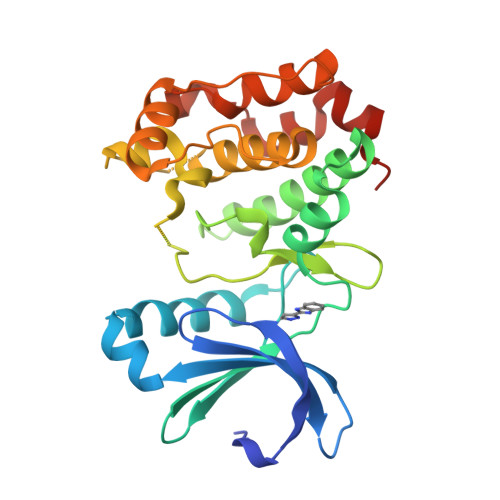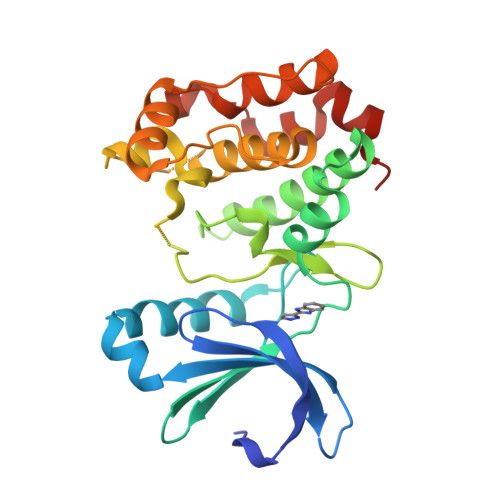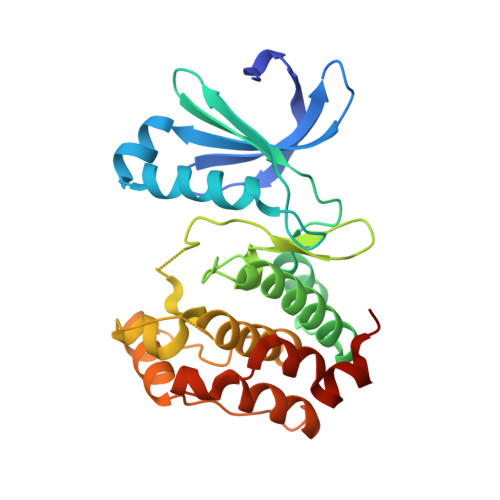Fragment-Based Discovery of the Pyrazol-4-Yl Urea (at9283), a Multitargeted Kinase Inhibitor with Potent Aurora Kinase Activity.
Howard, S., Berdini, V., Boulstridge, J.A., Carr, M.G., Cross, D.M., Curry, J., Devine, L.A., Early, T.R., Fazal, L., Gill, A.L., Heathcote, M., Maman, S., Matthews, J.E., Mcmenamin, R.L., Navarro, E.F., O'Brien, M.A., O'Reilly, M., Rees, D.C., Reule, M., Tisi, D., Williams, G., Vinkovic, M., Wyatt, P.G.(2009) J Med Chem 52: 379
- PubMed: 19143567
- DOI: https://doi.org/10.1021/jm800984v
- Primary Citation of Related Structures:
2W1C, 2W1D, 2W1E, 2W1F, 2W1G, 2W1H, 2W1I - PubMed Abstract:
Here, we describe the identification of a clinical candidate via structure-based optimization of a ligand efficient pyrazole-benzimidazole fragment. Aurora kinases play a key role in the regulation of mitosis and in recent years have become attractive targets for the treatment of cancer. X-ray crystallographic structures were generated using a novel soakable form of Aurora A and were used to drive the optimization toward potent (IC(50) approximately 3 nM) dual Aurora A/Aurora B inhibitors. These compounds inhibited growth and survival of HCT116 cells and produced the polyploid cellular phenotype typically associated with Aurora B kinase inhibition. Optimization of cellular activity and physicochemical properties ultimately led to the identification of compound 16 (AT9283). In addition to Aurora A and Aurora B, compound 16 was also found to inhibit a number of other kinases including JAK2 and Abl (T315I). This compound demonstrated in vivo efficacy in mouse xenograft models and is currently under evaluation in phase I clinical trials.
Organizational Affiliation:
Astex Therapeutics Ltd., 436 Cambridge Science Park, Milton Road, Cambridge, CB4 0QA, UK. s.howard@astex-therapeutics.com



















